10 Architectural Treasures to Visit in Nepal
Given its location as a nation nestled between India and China, Nepal sits at a cultural crossroads, blending a myriad of ethnic groups and influences. This syncretism is reflected in its rich architectural legacy, as Nepal has over many centuries both influenced and been influenced by design across the Himalayas and beyond. One of the first things that many visitors to Kathmandu’s historic sites notice is how similar a lot of the pagoda-style temples and palaces are to those in East Asia, and how different they are from the predominant styles of India. The greatest concentration of beautiful buildings can be found in the Kathmandu Valley, but there are various interesting spots elsewhere in the country too. Here are 10 that are worth going out of your way to visit.
Patan Durbar Palace, Patan
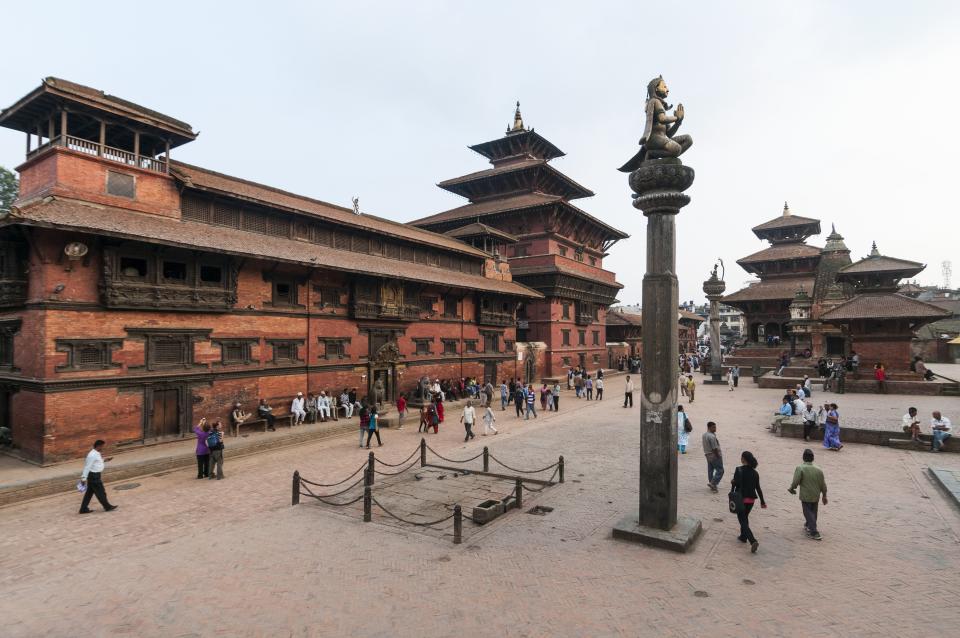
Durbar Square, Royal Palace with Garuda image
Photo by John Elk III. Image courtesy of Getty Images.The Durbar Square and Palace in Patan is one of three royal complexes in the Kathmandu Valley, all of which are UNESCO World Heritage Sites. It’s both the best preserved as well as the most ‘lived in.’ The palace now houses the excellent Patan Museum, which presents the history of the Kathmandu Valley’s art and architecture. The palace building itself was constructed in 1734 by the ruling Malla dynasty on the site of existing buildings. Highlights are the elaborately carved window frames and doorways, which are a hallmark of Newari wood carving (the Newars being the original inhabitants of the Kathmandu Valley). Patan is now essentially a southern neighborhood of Kathmandu, so it is easy to reach from the central city.
Hiranya Varna Mahavihar (the Golden Temple), Patan
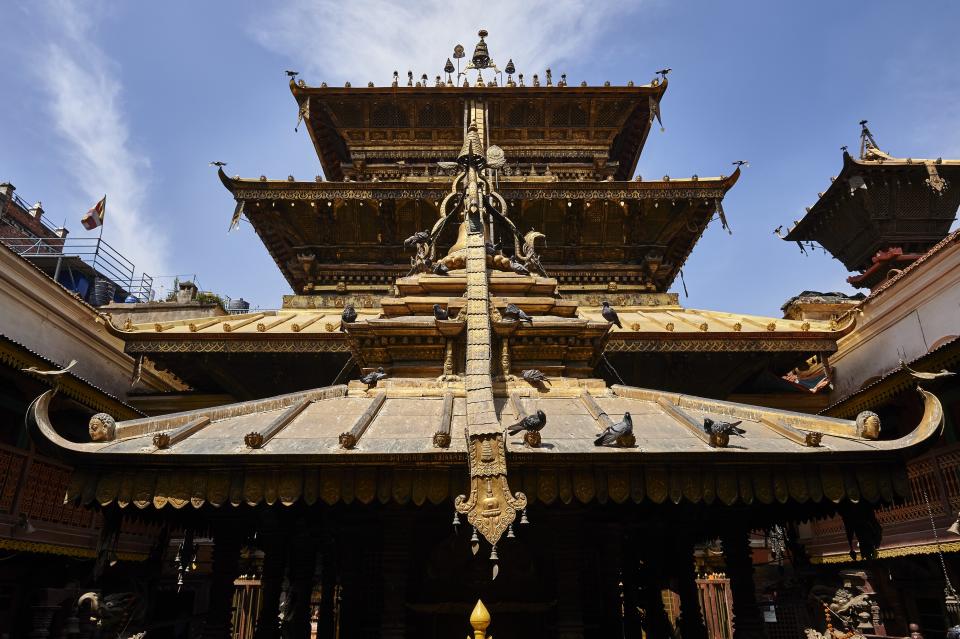
Golden Temple, Patan, Nepal
Photo by Andrea Pistolesi. Image courtesy of Getty Images.Despite its name, the Golden Temple is neither made from gold, nor is it a temple. The 12th-century Buddhist monastery around a small courtyard is decorated with brass and bronze that shines like gold. The courtyard is ringed with prayer wheels and dozens of bronze statues and statuettes of gods, goddesses, and protectors, such as lions. The long gold-colored plaques strung together that hang from the roof of the temple to the ground are called pataka, and are supposed to be a slide for the gods to descend from when people pray to them. It’s just around the corner from the Patan Durbar Square.
Taragaon Museum, Boudha
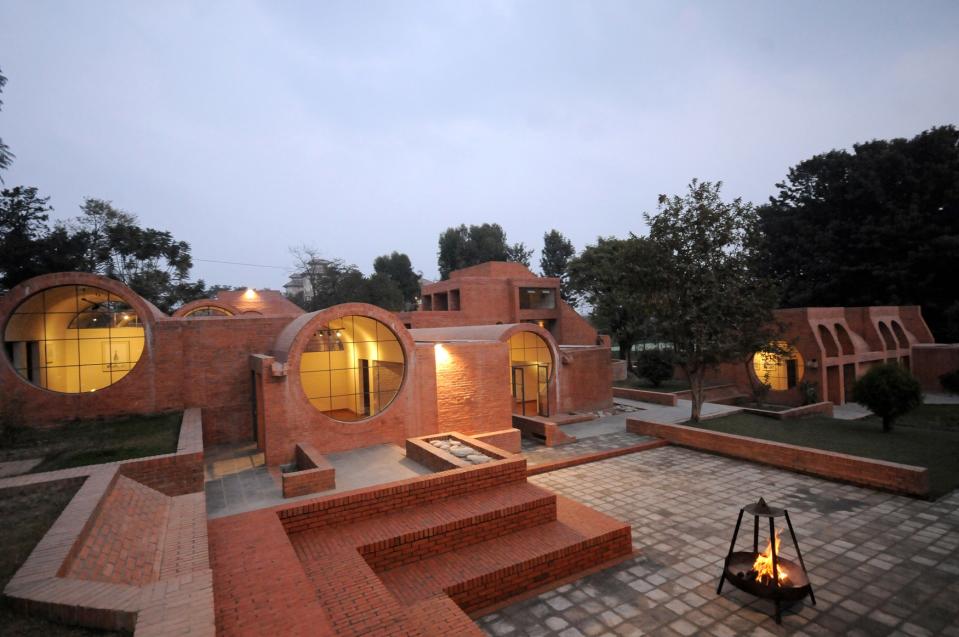
This modernist red brick building was constructed in 1971, designed by Austrian architect Carl Pruscha, and used for many years as a hostel. Now the bunker-like complex houses a museum documenting Nepal’s cultural heritage. Its large round windows allow ample light to illuminate the exhibits inside. The museum is located on the sprawling grounds of the upmarket Hyatt Regency Hotel, near the ancient Boudhanath Buddhist Stupa.
Baber Mahal, Kathmandu

Baber Mahal is an early-20th century palace just north of the Bagmati River in Kathmandu. The Rana prime ministers ruled Nepal between 1846 and 1951, and Baber Mahal is a prime example of Rana-era architecture as it draws upon European neoclassical elements at a time when Nepal was increasingly opening to the outside world. Baber Mahal is part of the broader Thapathali Durbar Palace, much of which is now used as government buildings. Of most interest to visitors (and most accessible) is the Baber Mahal Revisited complex, which houses high-end restaurants, boutiques, art galleries, and accommodation.
Ranighat Palace, Tansen
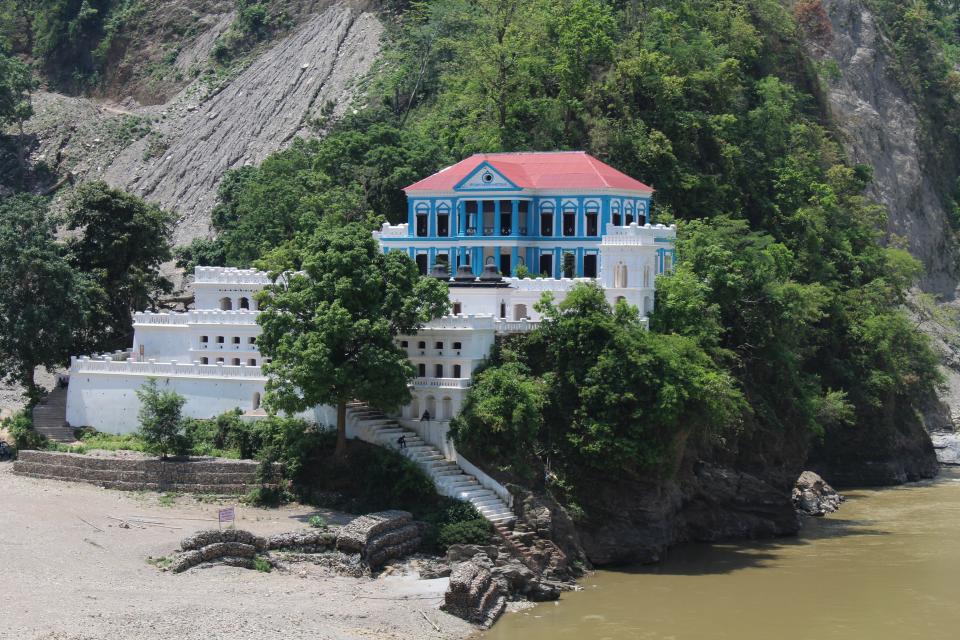
On the banks of the Kali Gandaki River in Western Nepal, the Ranighat Palace can be reached from the town of Tansen over a recently constructed (and very bumpy) road, or via a day-long hike. Built in 1893 by General Khadga Shamsher for his wife, it fell into disrepair because the general was exiled to India several years after its construction. It’s now undergoing some restoration, although it’s still quite rugged and secluded. The neoclassical Rana-era building is actually quite small, but the pillars and stepped terraces beneath it create visual grandeur. Tansen is en route between Lumbini and Pokhara.
Nuwakot Durbar, Nuwakot
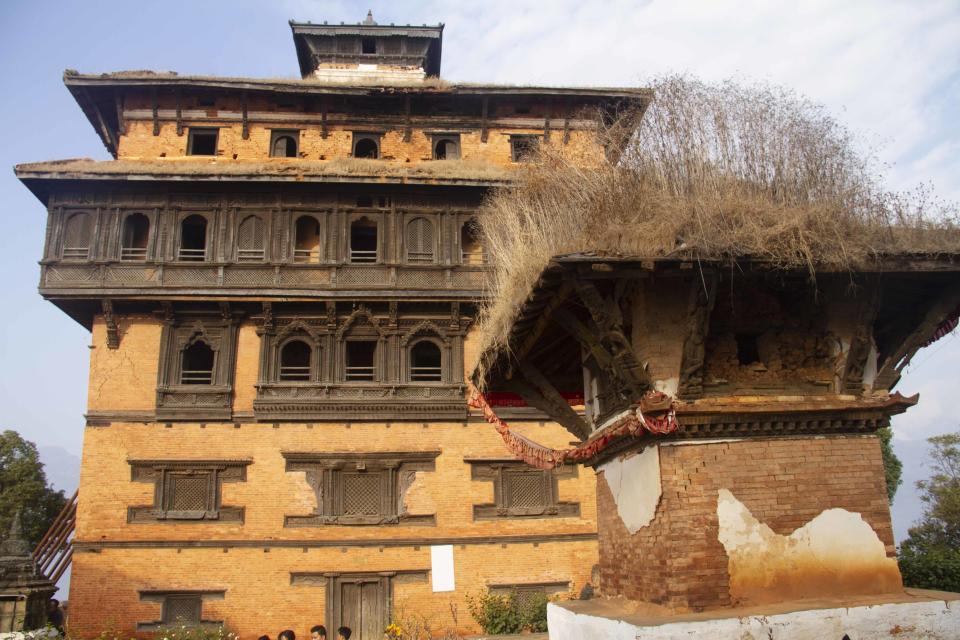
The tiny town of Nuwakot holds an important place in Nepali history. At a strategic location in the hills about 45 miles away, it was from here that King Prithvi Narayan Shah of Gorkha launched his attack on the Kathmandu Valley in 1744, ultimately leading to the unification of Nepal. His seven-story Nuwakot Durbar was built in 1762 and follows the Malla style of architecture, similar to the Patan Durbar Palace. It has very thick brick walls and elaborately carved windows, including a gallery on one of the upper floors that runs around the whole building. Nuwakot is about a three-hour drive from Kathmandu.
Janaki Mandir, Janakpur

Janakpur’s Janaki Mandir isn’t quite as old as it looks, being completed in 1910. But the city of Janakpur on the Terai (the plains bordering India) is an ancient Hindu pilgrimage site, as it’s believed to be the place where Lord Rama’s wife, Sita, was born. The Janaki Mandir is totally unique in Nepal and looks more like it belongs in the deserts of Rajasthan, as it combines Mughal and Rajput features. There’s a quaint museum inside, showing Mithila folk art from the region, and a lively Deepawali fair is held outside during the festival of lights in November. Janakpur is a 20-minute flight or a six-to-eight-hour drive southeast of Kathmandu.
Walled City of Lo Manthang, Upper Mustang
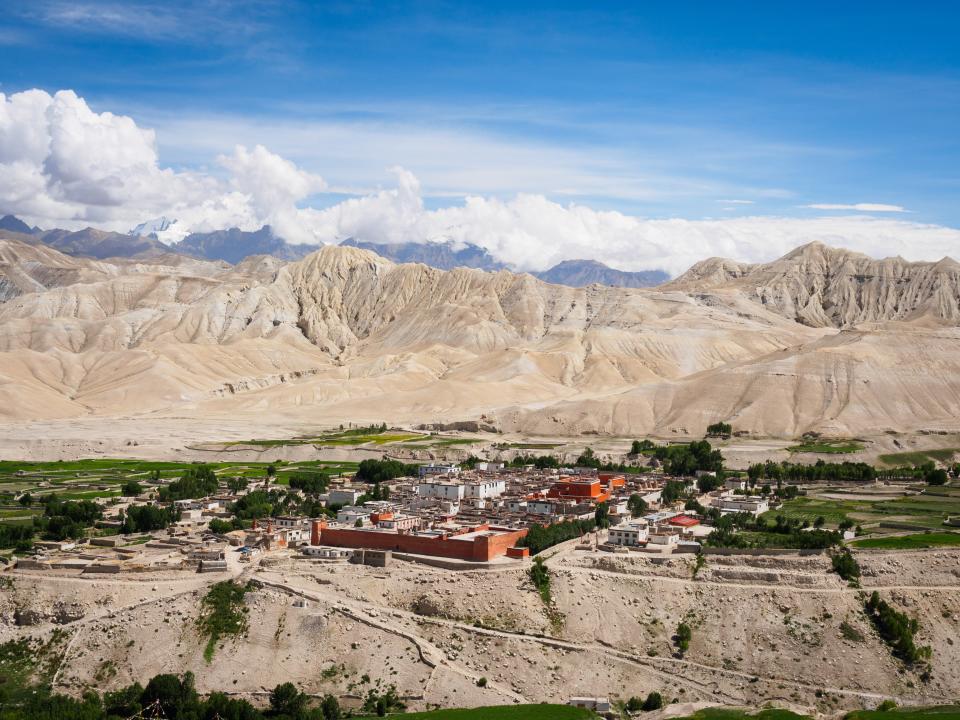
Ancient walled capital Lo Manthang, Upper Mustang
Photo by Whitworth Images. Image courtesy of Getty Images.The Upper Mustang area of Nepal, in the rain shadow of the Himalayas, is considered to be home to one of the best-preserved Tibetan Buddhist cultures in the world. It was closed to foreigners until 1992, and it’s still necessary to purchase an expensive 10-day permit to get there. The old walled city of Lo Manthang, the capital of Upper Mustang, is at an altitude of 12,600 feet. Within the walls are a dense labyrinth of whitewashed mud and brick buildings, a couple of ancient monasteries, and the five-story 15th-century King’s Palace. Dusk is a good time to visit the walled city, as the locals walk around town in a clockwise direction, spinning the prayer wheels that line the streets. Lo Manthang can be reached over several days from Pokhara, first by flying to Jomsom and then taking a Jeep or trekking the whole way.
Myanmar Monastery, Lumbini
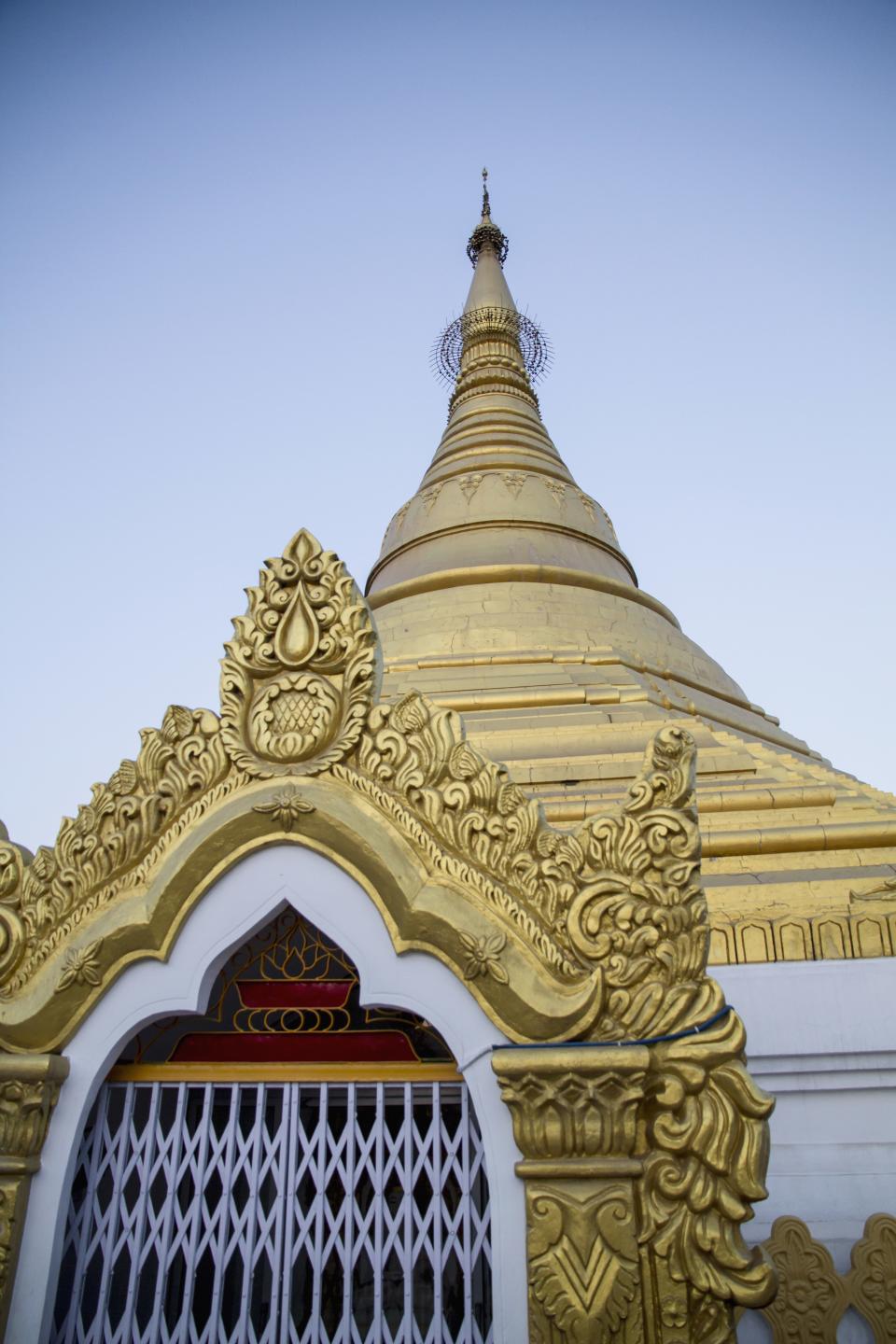
Nepal, Myanmar Golden Temple in Lumbini
Photo by Martin Benik. Image courtesy of Getty Images.Lumbini, on the plains near the border with India, was the birthplace of the historic Buddha, Prince Siddhartha Gautama. Archeological remains from Buddha’s day are scant, but Lumbini’s Peace Park is a collection of Buddhist temples, monasteries, and other monuments erected by various Buddhist organizations and governments from around the world. One of the most impressive is the Myanmar Monastery, and totally unlike any other building visitors will find in Nepal. The dazzlingly gold stupa resembles Yangon’s Shwedagon Pagoda.
Gorkha Durbar, Gorkha

The palace of Gorkha, Nepal.
Photo by Shikhar Bhattarai. Image courtesy of Getty Images.The small city of Gorkha, in the mid-hills of central Nepal, is another modern town that hides great significance in Nepali history. The kings that unified Nepal were originally from Gorkha. The 16th-century Gorkha Durbar sits on a hill high above the town, an ideal place to watch for attacks, and with great views of the Himalayas on clear days. Like the Patan and Nuwakot Durbars, it’s a fine example of Newari woodcarving, despite the fact that Gorkha is not a predominantly Newari town. The on-site Kalika Temple is an important pilgrimage site, and only Hindus can enter the temple itself. Gorkha is a couple hours’ drive north off the main Kathmandu-to-Pokhara highway.
Originally Appeared on Architectural Digest


